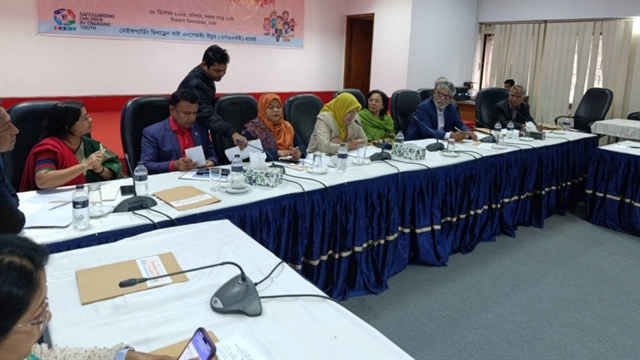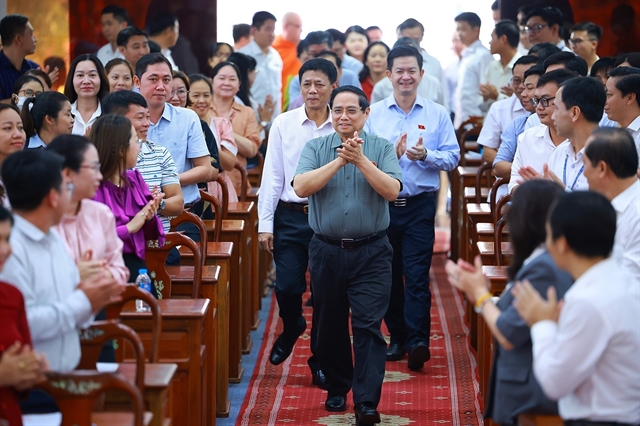 Travel
Travel

A church and ancient basalt stepping stones are the major symbols of the central coastal province of Phú Yên.
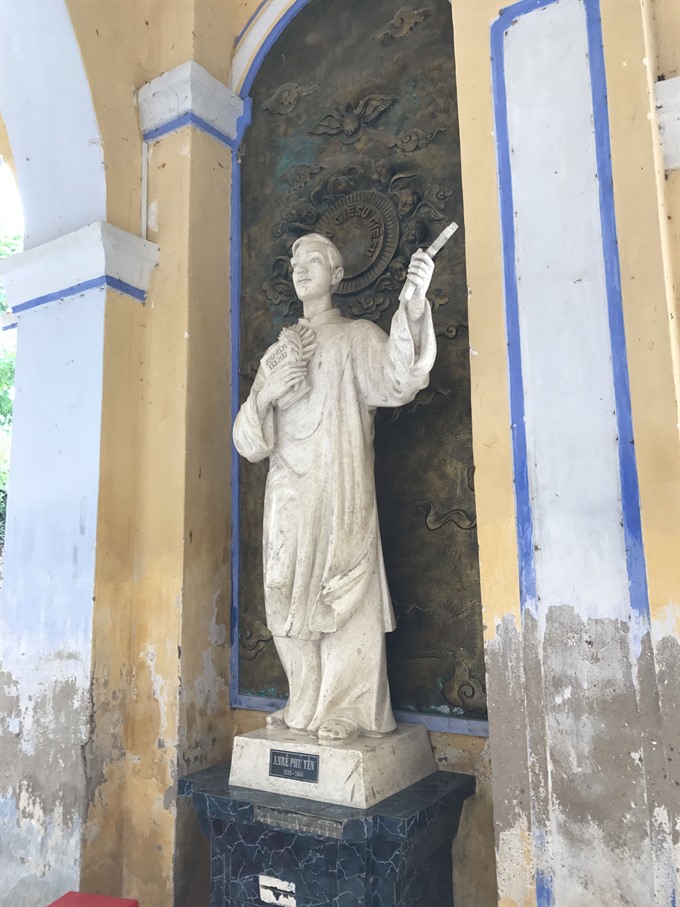 |
| The great simplifier: A statue of Blessed Andrew of Phú Yên outside the church. VNS Photo Lê Hương |
By Lê Hương
Those visiting the central province of Phú Yên never forget Ghềnh Đá Dĩa (Đá Dĩa Reef), a masterpiece of nature that has become a symbol of the province.
They also honour a man who helped to develop the romanised Vietnamese script, distancing it from centuries of introduced Chinese characters.
The volcanic lava reef consists of hexagonal columns of basalt that attract up to 6,000 visitors a day.
The stone formation was formed during the eruption of volcanoes in Vân Hòa (Sơn Hòa) highlands 30km from the site.
The eruptions took place about 200 million years ago. The red hot lava ran into the sea and was turned into huge crystals. The site measures 50 metres by 2,000 metres.
Standing on black stone columns and letting the waves wash my feet was one of the most relaxing moments I experienced on a recent vacation to the site. I felt so small in front of the greatness of nature.
Many children jumped back and forth on the tops of columns with screams of joy, while young women lost themselves taking photos at the spectacular scene.
The stone site has remained unchanged throughout centuries despite waves lapping the giant stones every single minute.
Another site rarely missed by tourists when visiting Ghềnh Đá Dĩa is Mằng Lăng Church.
I have spent lots of time admiring the architecture of Roman Catholic churches, important relics left by the French throughout Việt Nam in the 19th century. These include the Stone Cathedral in Sa Pa, St Joseph’s Cathedral in Hà Nội and the Notre Dame Cathedral Basilica in HCM City.
Mằng Lăng Church is among the most popular destinations in Phú Yên.
It is situated in An Trạch Commune, Tuy An District, 30km to the north of Tuy Hòa City. Documents say the church was built in 1892 by a Frenchman called Joseph de la Cassagne, whose Vietnamese name was Cổ Xuân. He was also the first priest in the locality.
An old man, who looks after the church, told me that 100 years ago, there were hardly any residents here. The area was surrounded by wild trees. There were a lot of trees with oval-shaped leaves and purple flowers called Mằng Lăng.
The jungle of Mằng Lăng has disappeared over the time, but the name of the precious wood has remained in the name of the church. Actually, one can find a table made of this wood inside.
Tourists can gaze at gothic domes and Vietnamese features in delicate engraved patterns on the main wooden doors.
In the complex are various sculptures of Blessed Andrew of Phú Yên (1624-1644), who is known as the "Proto-martyr of Việt Nam".
According to catholic.org website, he was baptised in 1641 and was a dedicated assistant to Jesuit missionaries and was arrested in the purge of Christians launched in 1644. After refusing to abjure the faith, he was put to death in Kẻ Chàm, Quảng Nam Province. Andrew was beatified by Pope John Paul II on March 5, 2000.
A surprise to tourists is a man-made grotto dug inside a hill next to the cathedral. The grotto hosts a prayer hall and exhibition areas which houses a book titled Phép Giảng Tám Ngày (or Cathechisms Divided into Eight Days) written by priest Alexandre de Rhodes (local name: Đắc Lộ), a French Jesuit missionary and lexicographer.
Latin and Vietnamese
The book is the first one printed in the Romanised Vietnamese language, which led Việt Nam away from centuries of using the Chinese script. It was printed in Latin and Vietnamese in 1651 in Italy.
A scientific conference held last year in Điện Bàn District, central province of Quảng Nam, confirmed that Thanh Chiêm Palace (1602-1883) in that area was a cradle of Vietnamese romanised script and that the Portuguese priest Francisco de Pina (1585-1625) was the founder of the modern writing system of the Vietnamese language.
The book Viet Nam: A History from Earliest Times to the Present written by Ben Kiernan says that in 1615, a group of five Italian, Portuguese, and Japanese Jesuit priests and lay brothers established the first Catholic mission in Đàng Trong. Two years later, Francisco de Pina, joined them and became the first Westerner to master the Vietnamese language.
In 1620, the French Jesuit Alenxandre de Rhodes arrived, studied Vietnamese under de Pina, and then moved with a Portuguese confrere to Đàng Ngoài, where he spent most of the years 1627-33, the book said.
De Rhodes was said to continue uncompleted research on Francisco de Pinau and to have perfected the romanised Vietnamese script based on Pina’s work.
A dictionary of Vietnamese script-Latin-Portuguese, written by de Rhodes, was believed to have been printed in Rome in 1651.
Leaving Mằng Lăng Church, I felt moved. I was so lucky to visit such a beautiful land with so much valuable historic treasures. — VNS
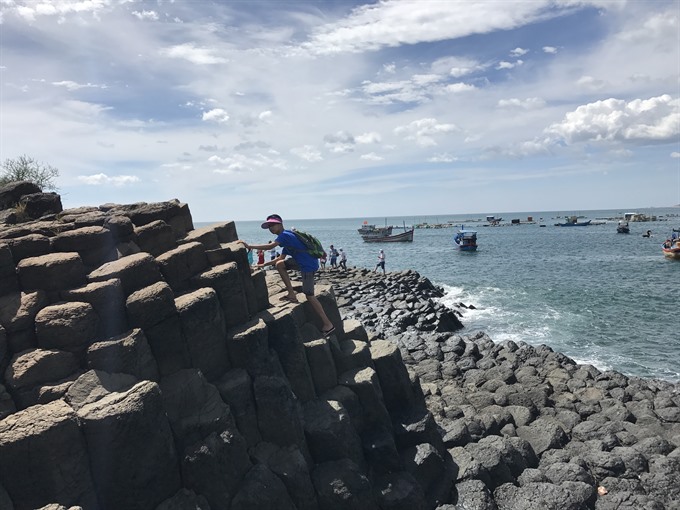 |
| Frozen in time: Đá Dĩa Reef with crystallised rock running to the sea. VNS Photo Lê Hương |
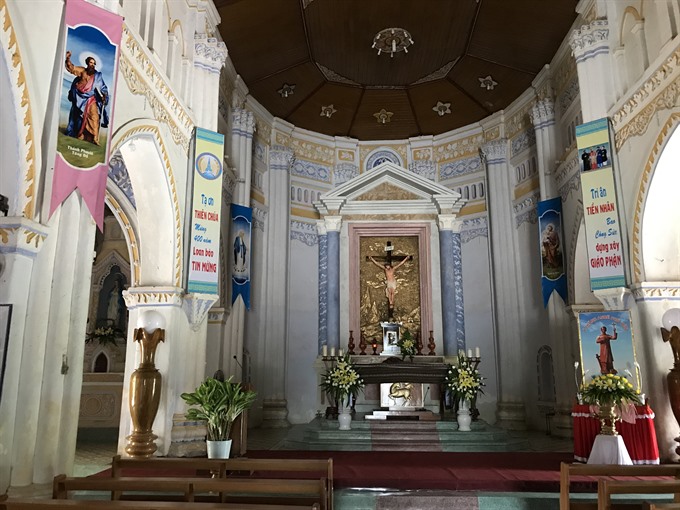 |
| Pastel interior: The architecture of Mằng Lăng Church is simple but attractive. VNS Photo Lê Hương |
 |
| Former jungle: The church used to be surrounded by a jungle of Mằng Lăng Trees. VNS Photo Lê Hương |
 |
| Delicate: The carved dome at the church. VNS Photo Lê Hương |
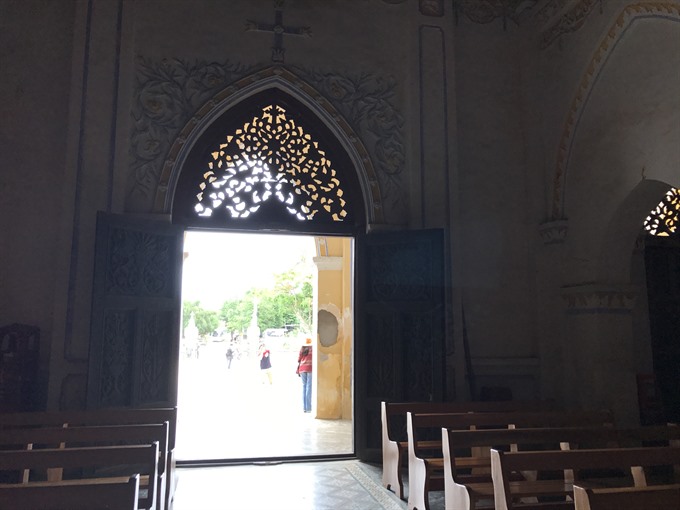 |
| Peaceful invite: The prayer hall. VNS Photo Lê Hương |
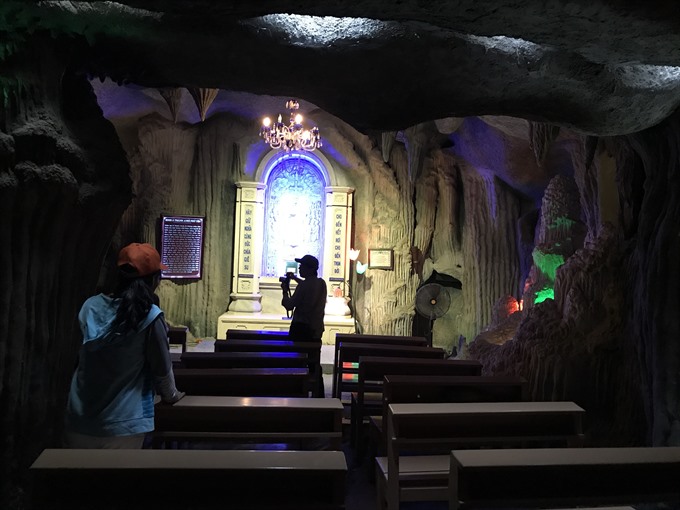 |
| Cavelike: The prayer hall. It looks like a natural grotto. VNS Photo Lê Hương |
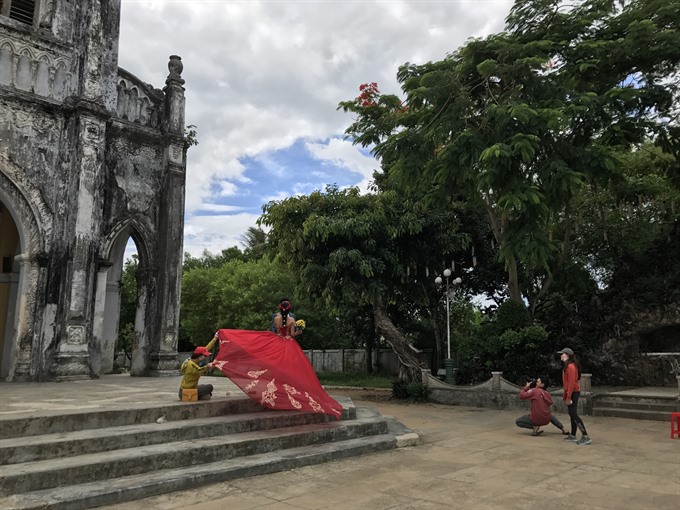 |
| Marriage centre: A couple take wedding photos outside the church. VNS Photo Lê Hương |



